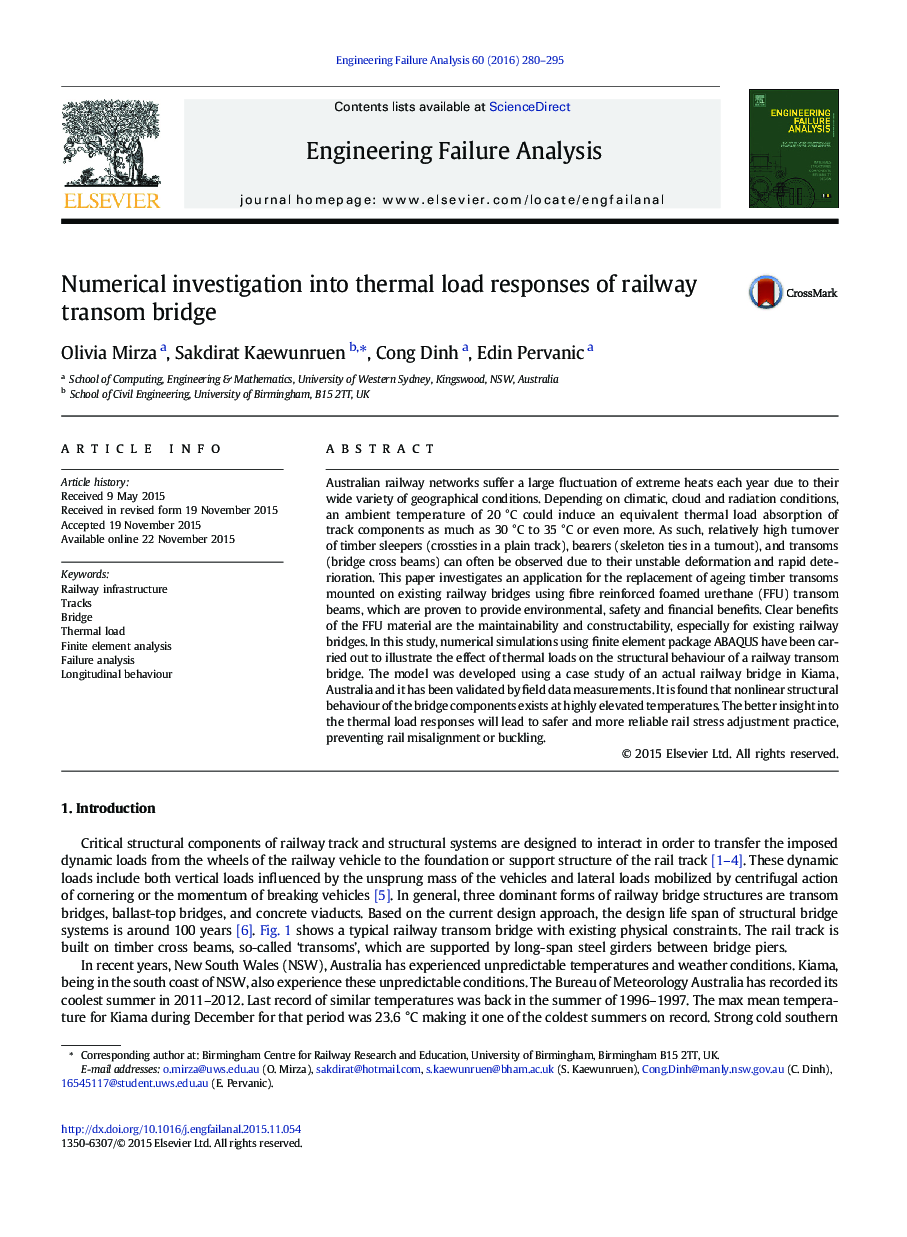| کد مقاله | کد نشریه | سال انتشار | مقاله انگلیسی | نسخه تمام متن |
|---|---|---|---|---|
| 773660 | 1462966 | 2016 | 16 صفحه PDF | دانلود رایگان |
• Thermal load responses of railway transom bridge are firstly investigated.
• Three dimensional finite element model has been established using material nonlinearities.
• Field data has been used to validate the model results.
• Nonlinear behaviour of the bridge components is pronounced at highly elevated temperatures.
• The understanding into thermal behaviour will help track engineers to better manage rail stresses, preventing rail buckling.
Australian railway networks suffer a large fluctuation of extreme heats each year due to their wide variety of geographical conditions. Depending on climatic, cloud and radiation conditions, an ambient temperature of 20 °C could induce an equivalent thermal load absorption of track components as much as 30 °C to 35 °C or even more. As such, relatively high turnover of timber sleepers (crossties in a plain track), bearers (skeleton ties in a turnout), and transoms (bridge cross beams) can often be observed due to their unstable deformation and rapid deterioration. This paper investigates an application for the replacement of ageing timber transoms mounted on existing railway bridges using fibre reinforced foamed urethane (FFU) transom beams, which are proven to provide environmental, safety and financial benefits. Clear benefits of the FFU material are the maintainability and constructability, especially for existing railway bridges. In this study, numerical simulations using finite element package ABAQUS have been carried out to illustrate the effect of thermal loads on the structural behaviour of a railway transom bridge. The model was developed using a case study of an actual railway bridge in Kiama, Australia and it has been validated by field data measurements. It is found that nonlinear structural behaviour of the bridge components exists at highly elevated temperatures. The better insight into the thermal load responses will lead to safer and more reliable rail stress adjustment practice, preventing rail misalignment or buckling.
Journal: Engineering Failure Analysis - Volume 60, February 2016, Pages 280–295
